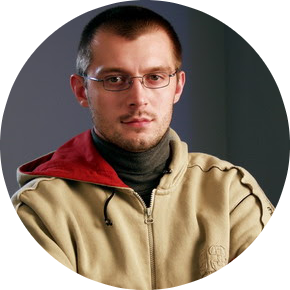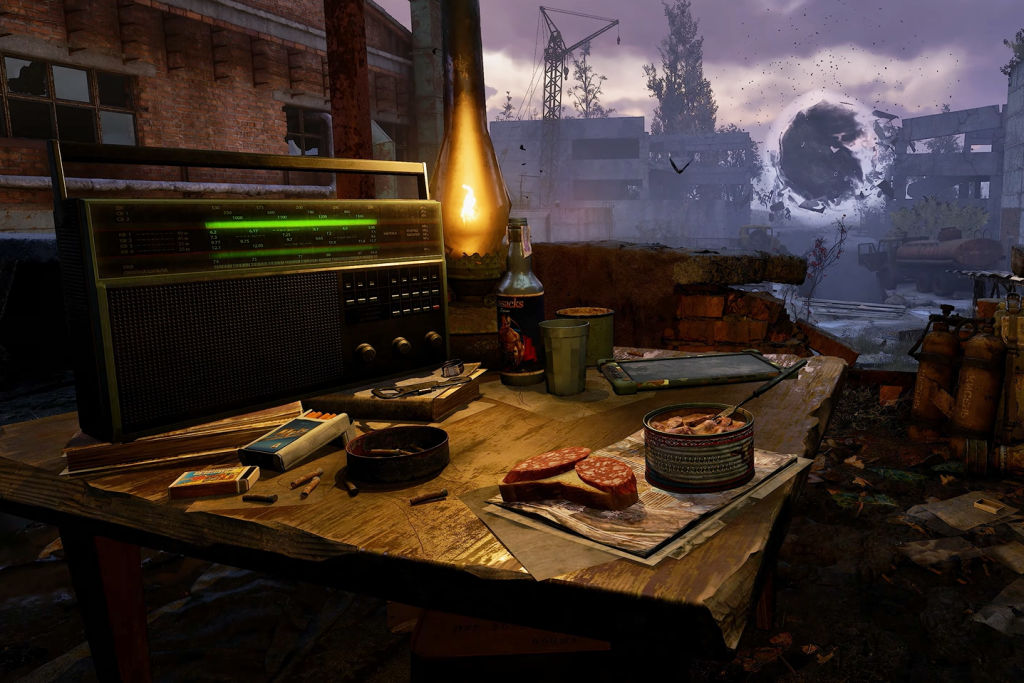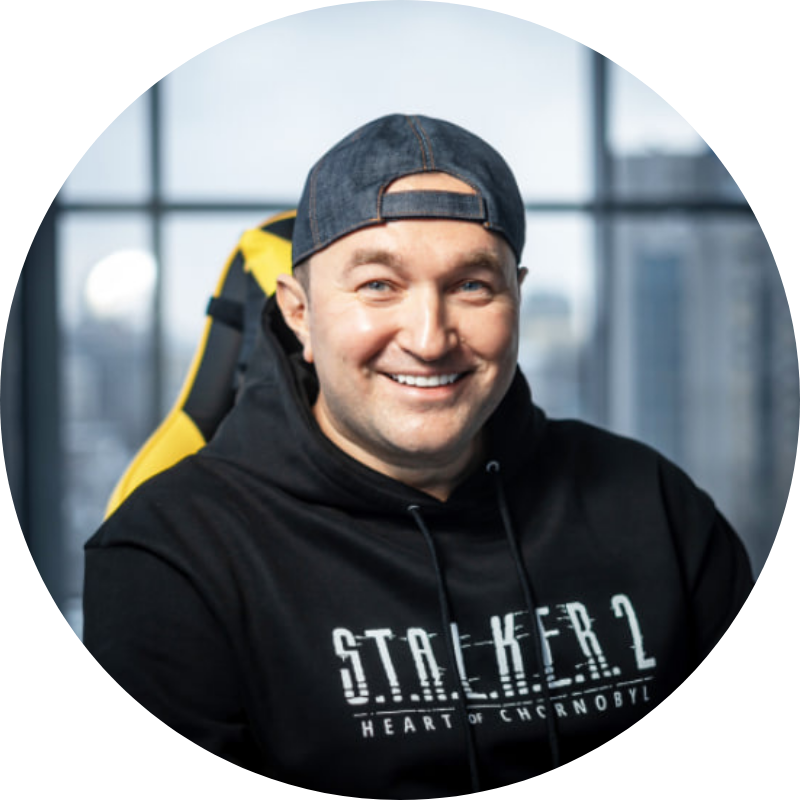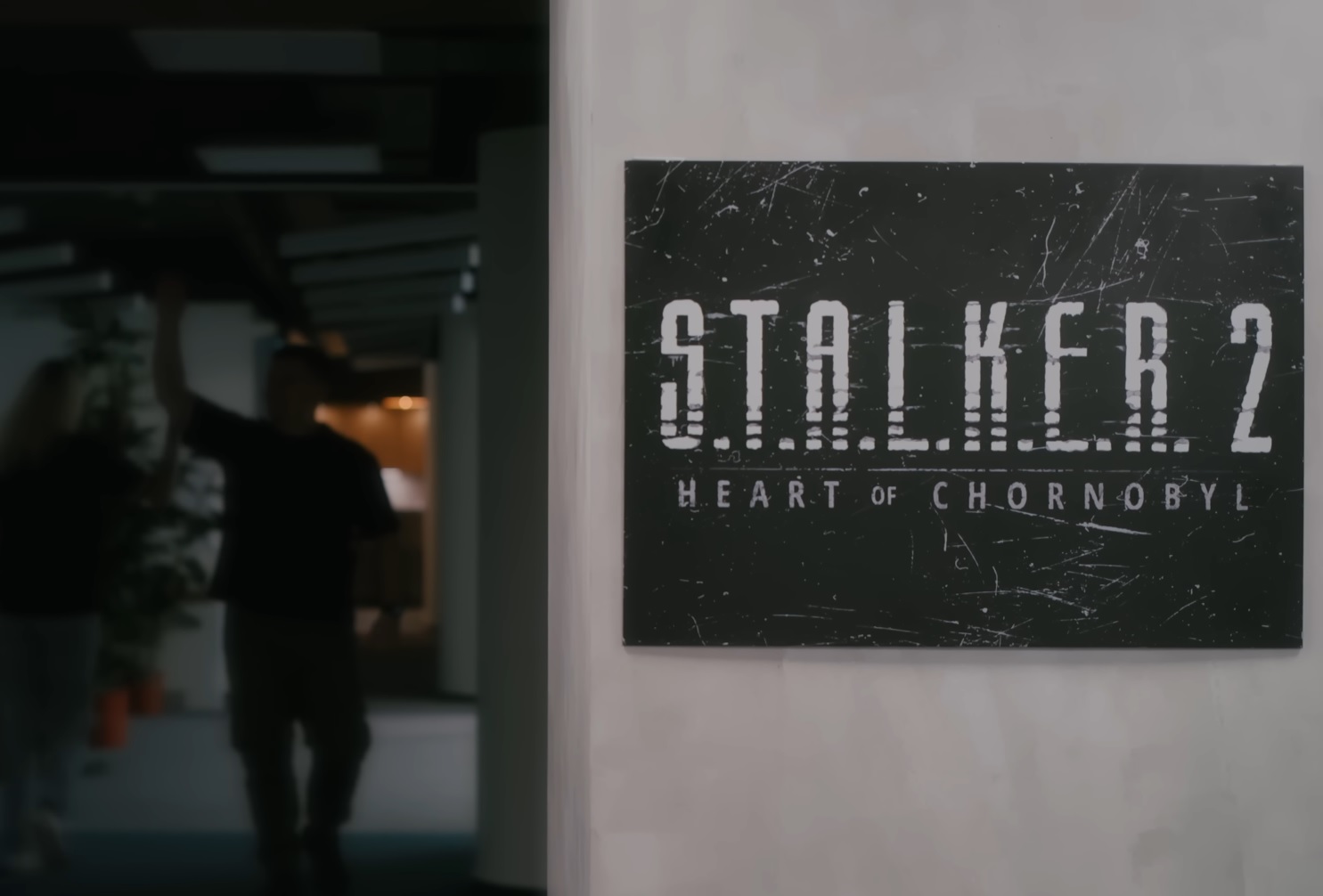GSC Game World is a legendary Ukrainian studio that gave the world the S.T.A.L.K.E.R. and Cossacks series. Having gone from localization to international recognition, it continues to change the face of the industry today. But how did it all begin?
It all started in 1995 in Kyiv. 17-year-old Serhiy Grygorovich founded a studio that initially focused on adapting Western games and creating software for the gaming consoles of the time. This period became GSC’s first step — a technical and organizational school.
Over time, the team wanted to implement their own ideas. Their first major project was Cossacks: European Wars, a real-time strategy game released in 2000. The game was praised for its historical accuracy and depth of mechanics, and it brought the studio its first real success on the international stage.
However, the real breakthrough came a little later. After visiting Chernobyl, Grygorovich was inspired to create a new project — S.T.A.L.K.E.R. The result was a game that combined shooting, horror, and role-playing elements, immersing the player in the dangerous but magnetic Exclusion Zone.

Its unique atmosphere, complex gameplay, and deep world made it a cult classic.
In 2007, GSC Game World impressed the world with the game S.T.A.L.K.E.R.: Shadow of Chernobyl. Its gloomy atmosphere, deep storyline, and unique mood immediately turned the project into a cult classic.
Just a year later, a prequel was released — Clear Sky, which told the story of how it all began. And in 2009, the studio completed the trilogy with the release of Call of Pripyat, expanding the myths and territories of the Zone.
More than a decade has passed, but interest in the series has not waned. Fans are still loyal to the world of S.T.A.L.K.E.R. — with its stalkers, anomalies, and the spirit of danger that can be felt at every turn.
Pause, restart, and a new course: the story of GSC Game World’s recovery
After the resounding success of S.T.A.L.K.E.R.: Shadow of Chernobyl, GSC Game World found itself in a difficult situation. Development of the sequel was hampered by financial difficulties, internal conflicts, and a number of other problems. In 2011, work was halted, S.T.A.L.K.E.R. 2 was canceled, and the team effectively disbanded. This was a serious blow to the Ukrainian gaming industry.
There were hints of a comeback in 2014–2015 with the release of a remastered version of Cossacks and the reformatting of the team. However, the real reboot did not happen until 2018, when it was officially announced that work on S.T.A.L.K.E.R. 2 would resume. Despite this, the process was slow, hampered by unstable funding and external risks.
The key turning point came in 2023. That year, GSC Game World got a new owner — entrepreneur Maksym Krippa. Serhiy Grygorovich, who had kept the studio “on his own shoulders” for years, admitted that it was impossible to finish the game without outside support. The transfer of management to the investor gave the project a chance to reach the finish line.
At the time of the change of ownership, 82% of the company passed to Maksym Krippa, while 18% of the shares remained with Yevgen Grygorovich, the founder’s brother, who continues to be responsible for the game’s operational processes and production. Entrepreneur Oleksandr Kokhanovsky, the same person from whom Krippa had previously acquired NAVI, became the key intermediary between Krippa and Sergey Grygorovich. It was this meeting that opened a new page in the history of GSC.
Despite the lack of official information about the value of the deal, documents from Ukrainian and Czech registries indicate a complete change of ownership. This put an end to a period of uncertainty — the studio gained stability and resources to focus on the main thing: completing S.T.A.L.K.E.R. 2.
S.T.A.L.K.E.R. 2: the road to release and the game’s main innovations
The development of S.T.A.L.K.E.R. 2 has been a real test for GSC Game World. After its announcement in 2018, the project moved forward, but in 2022, the process slowed down: part of the team remained in Ukraine, part moved away, and the studio was relocated to Prague.
In 2023, new blows were dealt — a data leak following a cyberattack by Russia and a fire in the office. Despite this, development did not stop. The release was postponed several times, but there were no plans to cancel the game — the team remained motivated.
On November 20, 2024, the world saw S.T.A.L.K.E.R. 2: Heart of Chornobyl — a game that had been eagerly awaited for years.
The project was created on Unreal Engine 5, giving the game detailed graphics, improved lighting, complex physics, and ray tracing support. Special attention has been paid to animations, artificial intelligence, and a modular weapon system.
S.T.A.L.K.E.R. 2: Heart of Chornobyl brings a number of new elements that expand both the storyline and the game world. For the first time, full-fledged female characters have been woven into the story, with their own roles, personalities, and influence on events in the Zone.

Another innovation is the radio inside the game. It plays in Ukrainian and broadcasts atmospheric tracks, songs by contemporary artists, and podcasts. This enhances the authenticity and adds new emotions to your travels through the Zone.
The game has also been embellished with branded collaborations. In particular, the project features the energy drink Non Stop, familiar to fans of the first trilogy, as part of the game world. The game also includes elements related to the Ukrainian mobile bank monobank.

In addition, crafting has been expanded, AI has been improved, modular weapons have been added, and there is more variability in gameplay. The updated A-Life 2.0 system makes the game world more alive and unpredictable. NPCs can now heal allies, search enemy corpses as before, and interact with the environment more realistically.
What is known after the release of S.T.A.L.K.E.R. 2: impressions, reviews, and commercial performance
Even before its release, S.T.A.L.K.E.R. 2: Heart of Chornobyl became one of the most anticipated games of 2024.
At the PC Gaming Show: Most Wanted, organized by PC Gamer, the project received the top award in the “Most Anticipated Game” category. The jury consisted of over 70 experts, including industry legends Sid Meier, Tim Schafer, Brian Fargo, and Dean Hall.
The game was officially released on November 20, 2024. In the first five days, it was purchased by 1.4 million players, and the peak number of concurrent users reached 121,000. The average time spent in the game is 7.6 hours, and positive reviews on Steam — 78%.
By April 2025, total sales had reached 2.6 million copies, generating over $125 million in revenue, according to data from Video Game Insights. The average time players spend in the game has increased to 40 hours, with each session lasting up to 23 hours. The percentage of positive reviews rose to 80.8% as a result of updates and patches.
More than 8,000 players log into the game every day. The top sellers are the US (22%), Ukraine (16%), and Germany (7%). Even before its release, more than 400,000 users added the project to their wish list.
Amidst a decline in Ukrainian game development, GSC Game World is showing growth. Six months after release, the team has grown from 220 to 270 people. According to Gamedev.dou, this is the largest increase in staff among domestic studios.
DLC, film adaptation, and development plans
After the release of S.T.A.L.K.E.R. 2, GSC Game World announced that this was just the beginning. Investor Maksym Krippa confirmed in an interview with Forbes that the game is already profitable and paves the way for the franchise’s development.
The studio is focused on updates: stability, bug fixes, and technical improvements. The plans include at least two story DLCs and the launch of multiplayer. Release dates have not been announced — quality and player support are the priority, not speed.

There are also talks with Netflix about adapting the game into a TV series. GSC is in no rush: they want to preserve the atmosphere of the Zone and not repeat other people’s decisions. Their colleagues’ example is only a guideline, not a template. The team strives to create something unique in their own style.

